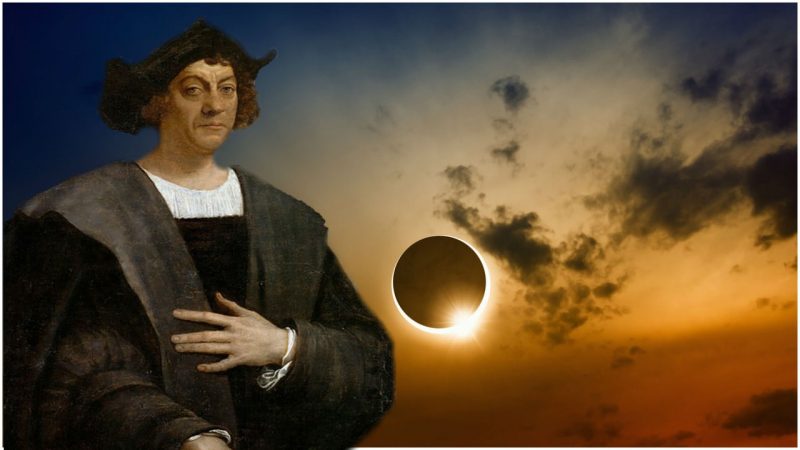Out of all the breathtaking sights one could witness in a lifetime, a total solar eclipse surely tops the list. And on Monday August 21, 2017, all of North America will be treated to an eclipse of the sun.
While almost every single person living on this continent will be able to catch a glimpse of this awe-inspiring spectacle, the direct path is from Salem, Oregon, to Charleston, South Carolina, where the moon will fully block the light of the sun and stand where it cast its shadow. Those millions will enjoy a total eclipse of the sun.
This highly anticipated natural phenomenon will only last a few precious minutes, in contrast to the lunar ones, which usually last for hours.
While today almost every non-flat-earther who attended school grasps how solar and lunar eclipses occur and astronomers are able to predict their exact time and place long before they occur, ancient cultures had a hard time understanding why the sun was vanishing from the sky only for it to reappear moments later, or why the moon is sometimes the color red.
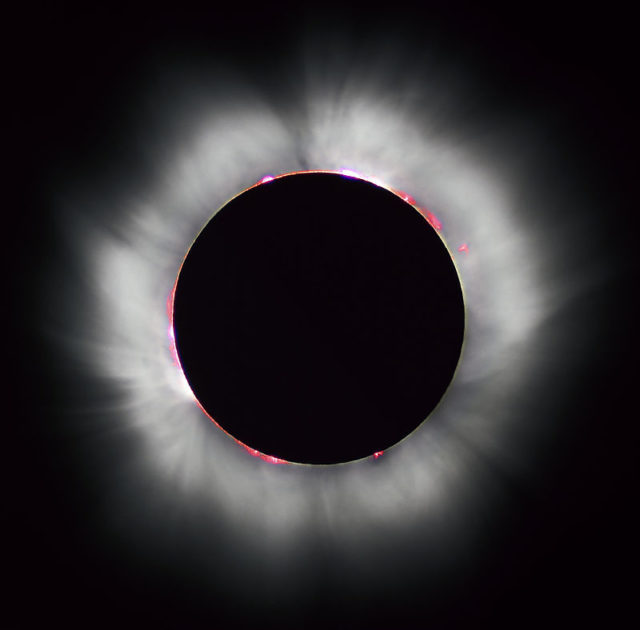
For instance, in Vietnam, people feared that a giant frog was eating their sun during a solar eclipse. Chinese mythology speaks of a masculine fire dragon that attempts to eat the moon during lunar eclipses and of their efforts to chase him off by making loud noises, such as firing cannons towards the sky.
Although a few astronomers of the 8th century successfully debunked some of the myths and legends, “the majority of people didn’t really understand what eclipses or shooting stars were until at least the 17th century,” says Edwin Krupp, director of the Griffith Observatory, located in California. According to him, people’s understanding was hampered by limited education and inadequate access to information. Newly found discoveries were almost always shared in very small circles, “so myths and superstitions from older traditions perpetuated.”
While most of us now consider these myths to be utter nonsense, back then, in almost every culture, lives were heavily dependent on the sky. “Things like sunrise and sunset, the lunar cycle, and the change of seasons gave order to the world, traced the passage of time, and in many ways determined people’s ability to survive” explains Krupp. So to mark the significance of unusual events, as the eclipses certainly are, people developed some rituals.
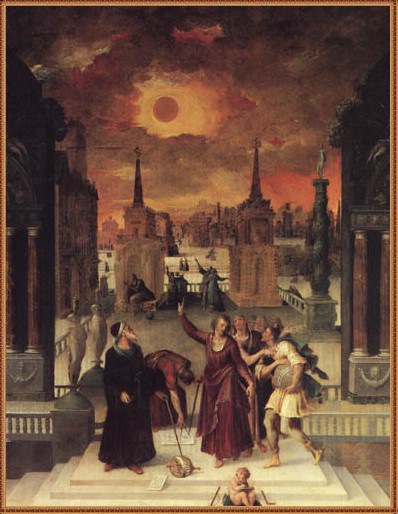
In a scenario like this, someone who understood science could find it advantageous and use it alongside their understanding of mythology to get out of dire situations. Like for instance, an Italian explorer of the 15th century who instead of sailing east as he assumed he was, sails toward the west and got himself and his crew stuck without water or fresh supplies on a small island in the Atlantic Ocean, believing he is in India.
In 1503, Christopher Columbus made his fourth voyage across the Atlantic, from Cadiz to San Salvador, the island northeast of Cuba he had previously discovered. Unfortunately, on the way to the “New World,” his ships got infested by worms that gradually ate the foundation of the vessels and make holes in the planks. On June 25, to avoid their demise and sinking to the bottom of the ocean, Columbus ordered his men to dock at the nearest island, which happened to be Jamaica, where they would wait for rescue.
The native people living there, impressed by these strange newcomers, were happy enough to provide shelter at first. So they gave them food, fresh water, almost everything they’d ask for. They were fascinated by the shiny trinkets and the loud whistles they would get in return for corn, fish, and housing.
In the meantime, the great explorer spent his time looking through his astronomical table charts in order to calculate when their rescue would arrive. Among these were two specific volumes that almost every explorer used to navigate himself on the open sea, including Vasco da Gama during his expeditions: the Perpetual Almanac of Abraham Zacuto and the Ephemerides, a recent volume of astronomical charts composed and published by Johannes Müller, a distinguished German astronomer and mathematician later celebrated by his Latin name Regiomontanus.
Months passed and the native inhabitants tired of these “fair” transactions, and drove Columbus and his crew back to their ships, not wanting to provide them with supplies anymore. Without food, fresh water, or any rescue in sight, their end was near.
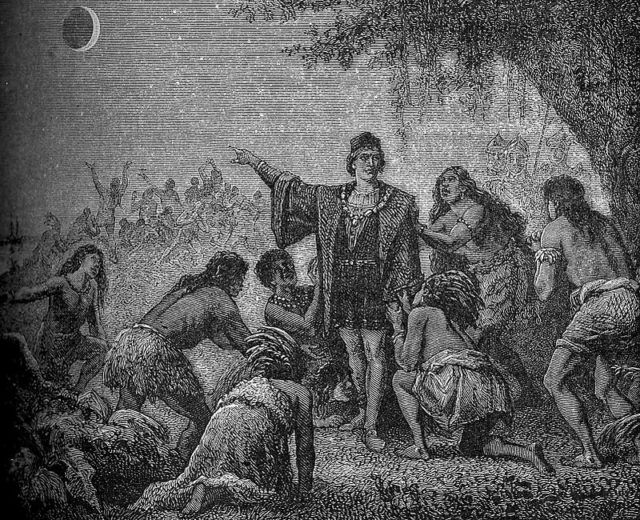
Luckily enough, in between these pages filled with accurate information about the sun, moon, and the planets, as well as their position and detailed instructions for star-guided navigation, the famous explorer found a forecast for a total lunar eclipse, which was just around the corner, on February 29, 1504.
Considering that the tribe that recently drove them away would not take such an event for granted and reminded by a biblical verse “The sun will be turned into darkness and the moon into blood before the great and awesome day of the LORD comes”-Joel 2:31, Columbus thought of a solution and asked for a meeting with the natives to try something out as a last resort.
At the appointed meeting, petrified and fearing for his safety, he told them that the Christian God was displeased by their conduct and unwillingness to provide goods anymore, and would show a clear sign in the hours to come, after which He would unleash his wrath upon them. Although not fully certain if his understanding was correct, the moon rose exactly as predicted, only to turn red right after and seem to grow vague in the sky.
Natives who had been unimpressed with Columbus were running from every corner with supplies begging him to restore the moon. And he did, after first telling them he would have to ask his deity if He would reconsider. So with the help of an interpreter, Columbus told them to wait, while he prayed in private. Back in his chambers, he consulted with his sandglass, and assisted by Regiomontanus’s writings, cleverly measured the time needed for the moon to lose that reddish hue of refracted light and come to its natural self.
And as this was just about to happen, he returned to the shore and informed them that his God had agreed, as long as they would keep him and his men fed and safe. In exchange, his God promised to punish the raiders and pillagers in his own way later on.
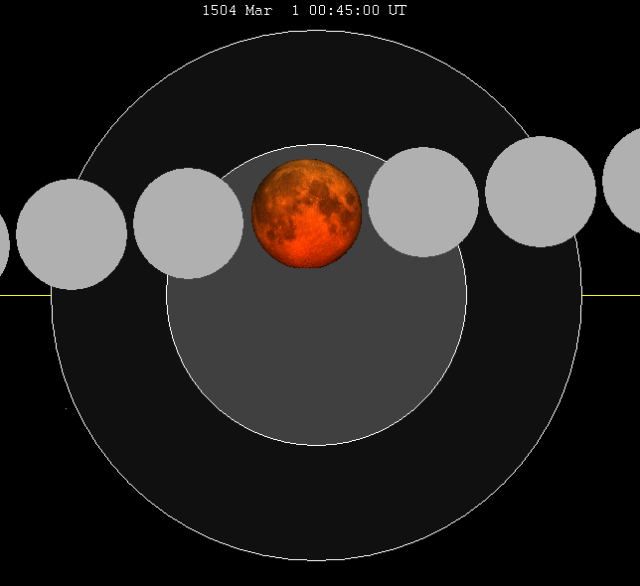
On the next day and over the course of the next year, they kept their word up until June 29, 1504, when a Spanish ship finally arrived to rescue Columbus and his stranded men.
Regiomontanus’s Ephemerides had precise information on the expected dates of many eclipses. Not only that, it also contained explicit information about their duration and timing. If their duration was clearly stipulated, the location for it could not have been, for this man was on newly discovered land. The fact remains that Columbus in actuality didn’t know where he was, or he only thought he knew. Which makes the story seem implausible.
However, when the Sun, Earth, and Moon are all aligned in an exact straight line it is visible from almost half the globe–what we now refer as a “Blood Moon.” Columbus maybe just got lucky, as he was lucky enough to discover a whole new continent, entirely by accident.
